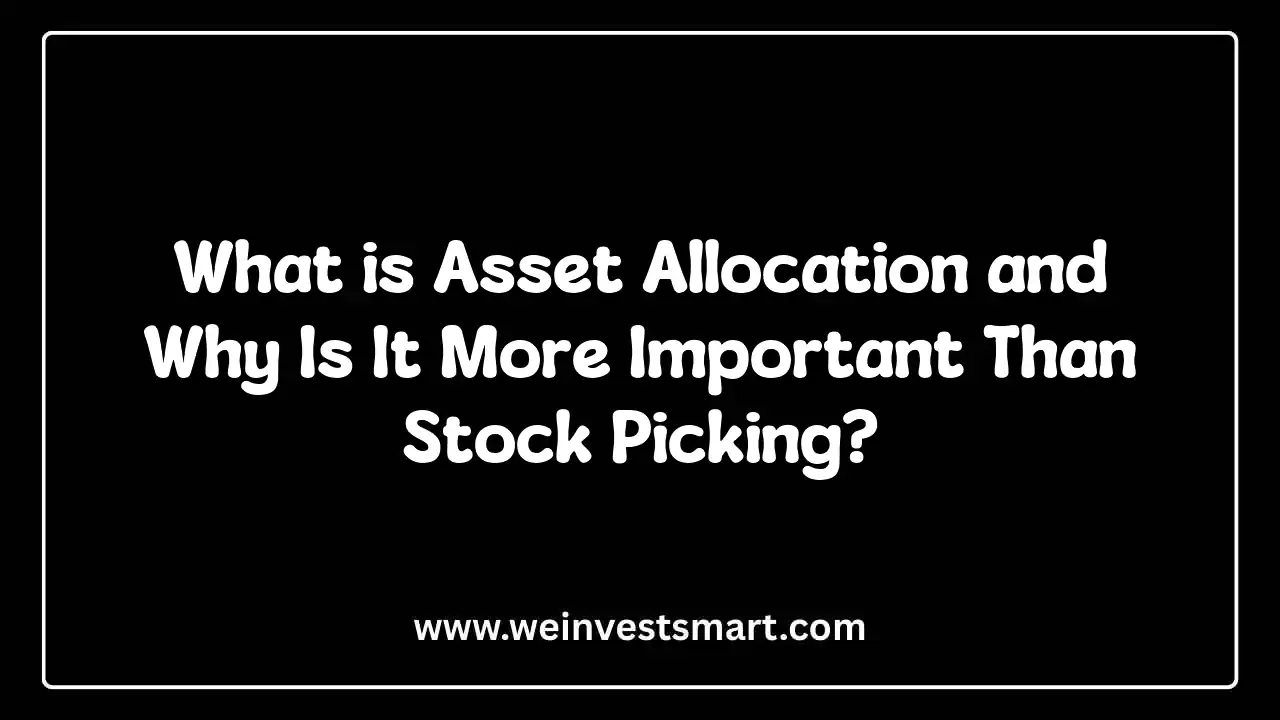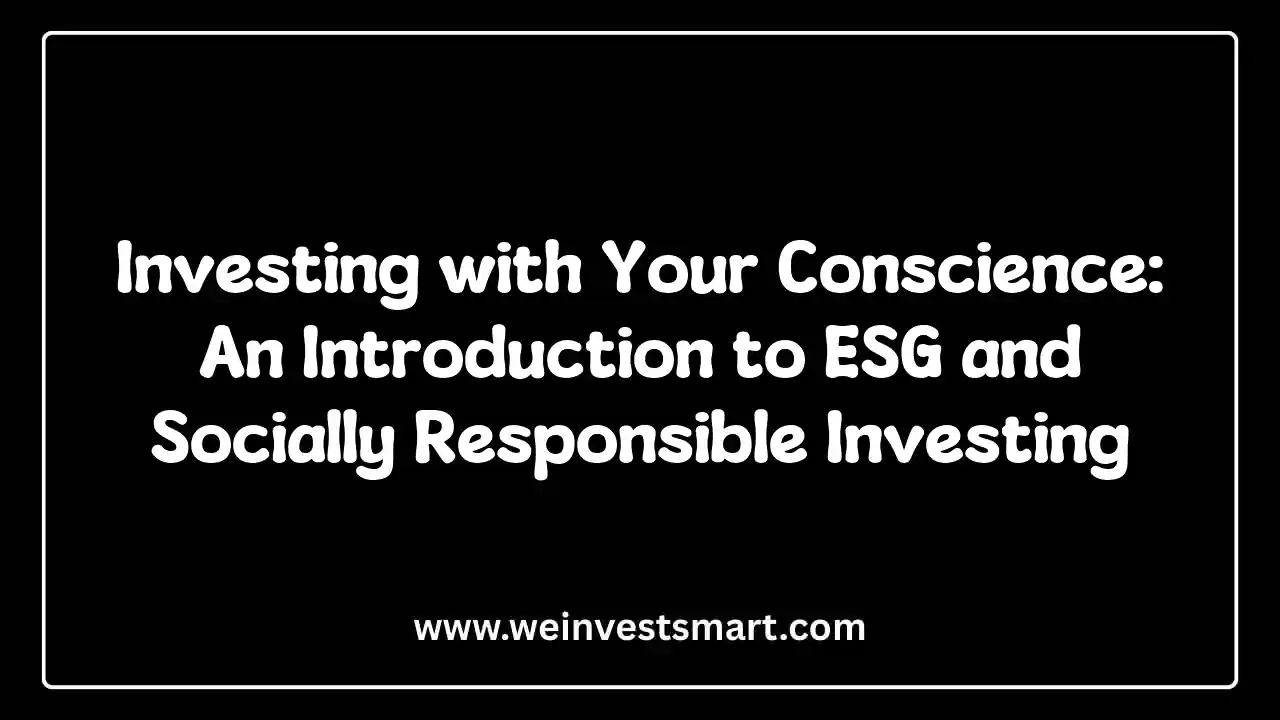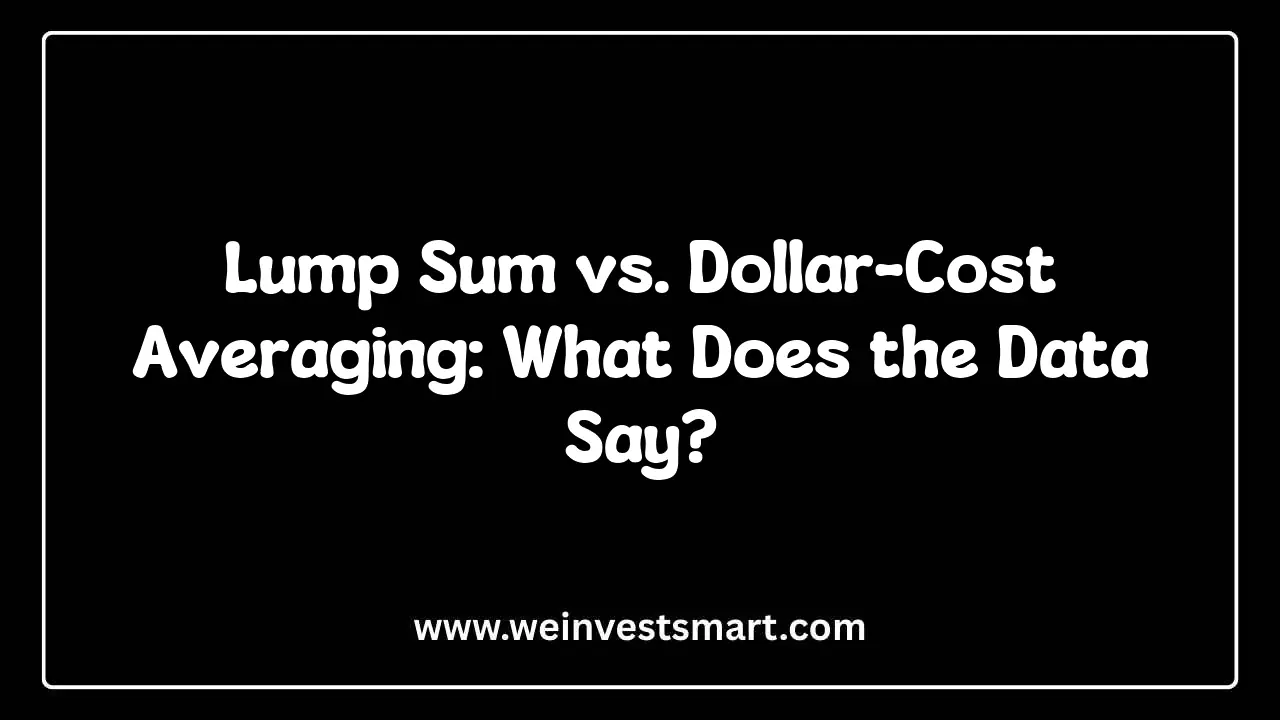· WeInvestSmart Team · investment-strategies · 12 min read
Growth vs. Value Investing: Which Philosophy Fits Your Personality?
A detailed comparison of these two core investing strategies, including famous proponents (like Peter Lynch for Growth, Warren Buffett for Value), typical company characteristics, and how to build a portfolio around one or both.
Most people believe that successful investing is about finding a secret formula, a single, universally “best” way to pick stocks. They hunt for a magic algorithm that will tell them exactly what to buy and when to sell. But here’s the uncomfortable truth: there is no single right answer. The world of investing is not a hard science like physics; it’s a social science, more like psychology. It’s a realm of competing philosophies, each with its own tribe of devoted followers and legendary champions. Going straight to the point, the two most powerful and enduring of these tribes are Growth Investing and Value Investing.
We live in a world that bombards us with stock tips. Financial news celebrates the high-flying tech company that doubled in six months, while also praising the grizzled, patient investor who bought a boring old railroad company for a bargain. We’re left wondering: Am I supposed to be chasing the future, or hunting for forgotten treasures?
But what if we told you that this isn’t a question of which strategy is “better”? The real question is, which strategy is better for you? Here’s where things get interesting. Your success as an investor has less to do with the stocks you pick and more to do with the investing philosophy you can stick with, through good times and bad. And this is just a very long way of saying that before you can decide what to invest in, you must first understand who you are as an investor.
You may also be interested in: How to Build a Dividend Portfolio for Passive Income: A Step-by-Step Guide
The Foundation: Two Sides of the Same Coin
At their core, both growth and value investors are trying to do the same thing: buy a company for less than its ultimate worth. The difference lies in how they measure that worth and where they look for it.
Think of it like two different approaches to art collecting:
- The Growth Investor is like a collector who seeks out the hot, up-and-coming artist whose paintings are already selling for high prices, believing their fame will explode and the paintings will be worth 10 times more in the future.
- The Value Investor is like a collector who scours flea markets and dusty antique shops, looking for a forgotten masterpiece that is currently unrecognized and selling for a fraction of its true worth.
Both can be wildly successful. But their mindset, their methodology, and the personality required to succeed are polar opposites.
You may also be interested in: Introduction to Smart Investing: Your Guide to Building Wealth
Growth Investing: The Thrill of Chasing the Future
Going straight to the point, growth investing is a strategy focused on identifying companies that are expected to grow their earnings and revenues at a faster rate than the overall market. These are the innovators, the disruptors, the companies shaping the future.
The patron saint of growth investing is the legendary Peter Lynch, who managed the Fidelity Magellan Fund from 1977 to 1990, achieving an astounding 29.2% average annual return. His philosophy was to “invest in what you know,” finding companies with a simple business model and a dominant position in a rapidly expanding industry.
Characteristics of a Typical Growth Company:
- High Revenue Growth: They are rapidly increasing their sales, often by 20% or more per year.
- Strong Earnings Momentum: Their profits are not just growing, but accelerating.
- High Valuation Metrics: This is key. Growth stocks often look “expensive” based on traditional metrics like the Price-to-Earnings (P/E) ratio. A growth investor doesn’t mind paying a premium price today because they believe the company’s future growth will more than justify it.
- Innovative Products or Services: They often have a groundbreaking technology, a powerful brand, or a new business model that is disrupting an entire industry.
- Reinvestment of Profits: Instead of paying out dividends to shareholders, they plow every spare dollar back into the business to fuel further growth through research, development, and expansion.
Examples of Growth Companies (at various points in their history): Think of a young Amazon in the early 2000s, Tesla as it revolutionized the electric vehicle market, or a cutting-edge biotech firm on the verge of a medical breakthrough.
The Psychology of a Growth Investor:
The funny thing is that being a successful growth investor requires a specific temperament. You must be an optimist, someone who believes in the power of innovation and is willing to pay up for a piece of the future. You need a strong stomach for volatility. Growth stocks are like sports cars—they offer thrilling acceleration but can be prone to spectacular crashes. When market sentiment turns, these high-flying stocks can fall much faster and further than the broader market. You have to be willing to hold on through gut-wrenching downturns, trusting that the long-term growth story is still intact.
And this is just a very long way of saying that a growth investor’s primary question is: “How big could this company become?”
You may also be interested in: Investing with Your Conscience: An Introduction to ESG and Socially Responsible Investing
Value Investing: The Art of the Bargain Hunt
If growth investing is about chasing potential, value investing is about finding certainty.
Going straight to the point, value investing is a strategy focused on identifying companies that are trading for less than their intrinsic, or underlying, value. These are often solid, established companies that have fallen on temporary hard times or have been overlooked by the market.
The undisputed godfather of value investing is Warren Buffett, the Chairman of Berkshire Hathaway. His mentor, Benjamin Graham (the author of “The Intelligent Investor”), laid the foundation for the philosophy: find a great business, calculate its true worth, and then wait for the opportunity to buy it at a significant discount—a “margin of safety.”
You may also be interested in: The Permanent Portfolio: An All-Weather Strategy for Volatile Times
Characteristics of a Typical Value Company:
- Low Valuation Metrics: This is the hallmark of a value stock. They look “cheap” compared to their peers or the broader market. They will have a low Price-to-Earnings (P/E) ratio, a low Price-to-Book (P/B) ratio, and a high dividend yield.
- Established, Stable Business: These are often not the exciting disruptors. They are the “boring” companies that have been around for decades, providing essential goods and services—think banks, insurance companies, consumer staples, and industrial manufacturers.
- Strong Balance Sheet: A value investor wants to see a company with manageable debt and a solid financial position that can weather a downturn.
- Consistent Dividends: Unlike growth companies, value companies often have more cash than they need for reinvestment, so they return a portion of their profits to shareholders in the form of regular dividends. This provides a steady return even if the stock price isn’t moving.
- Temporarily Out of Favor: The reason a good company is cheap is often because it’s facing a headwind—a bad news cycle, a temporary industry slump, or a market overreaction to a disappointing earnings report.
Examples of Value Companies: Think of a company like Coca-Cola during a health craze, a major bank after a financial crisis, or an oil company when energy prices are low.
The Psychology of a Value Investor:
Here’s where things get interesting. A successful value investor must be a contrarian. You have to be comfortable buying when everyone else is selling, and being patient when everyone else is chasing short-term gains. You must be a business analyst at heart, willing to dig into financial statements to determine a company’s true worth, independent of its stock price.
This sounds like a trade-off, because you’ll miss out on the hottest trends, but it’s actually a desirable thing. We covet this discipline because it is rooted in a risk-averse mindset. Your “margin of safety” provides downside protection. If your analysis is right, you have two ways to win: the stock price rises to its true value, and you collect dividends along the way. Your patience is your greatest weapon.
You may also be interested in: Dollar-Cost Averaging (DCA): The Most Powerful Antidote to Market Timing
And this is just a very long way of saying that a value investor’s primary question is: “What is this business worth, and can I buy it for less?”
You may also be interested in: Your Guide to the Alphabet Soup of Retirement: 401(k) vs. Roth IRA vs. Traditional IRA
Head-to-Head: A Summary of the Core Differences
| Feature | Growth Investing | Value Investing |
|---|---|---|
| Core Philosophy | Buy companies with high future growth potential | Buy great companies at a bargain price |
| Key Metric | High revenue & earnings growth | Low valuation metrics (P/E, P/B) |
| Company Profile | Innovative, disruptive, often in tech or healthcare | Established, stable, often in finance or industrials |
| Investor Mindset | Optimistic, high-risk tolerance, patient with volatility | Contrarian, risk-averse, patient with time |
| The Big Question | ”What will this company be worth?" | "What is this company worth right now?” |
| The Famous Proponent | Peter Lynch | Warren Buffett |
You may also be interested in: What Are ETFs? The Ultimate Low-Cost Tool for Instant Diversification
Can You Be Both? The Rise of “Growth at a Reasonable Price” (GARP)
But what do we do if we see the wisdom in both approaches? Must we choose a side in this investing philosophy war? The answer is no.
In fact, the lines have blurred over time. Even Warren Buffett has famously said, “Growth and value are joined at the hip.” A true bargain is a company that is both high-quality and has the potential to grow. This has led to a hybrid strategy known as Growth at a Reasonable Price (GARP).
A GARP investor looks for the best of both worlds: companies with solid, above-average growth prospects that are not trading at the insane valuations of pure growth stocks. They are looking for quality and growth, but they are not willing to overpay for it. In many ways, this is the pragmatic middle ground that many of the world’s best investors, including Buffett himself in his later years, have adopted.
You may also be interested in: Introduction to Smart Investing: Your Guide to Building Wealth
How to Build a Portfolio: An Action Plan for Beginners
This is all fascinating, but how do you, as a beginner, actually apply this? Trying to pick individual growth or value stocks is a difficult and time-consuming game.
Going straight to the point, the easiest and most effective way for a beginner to implement these strategies is through index funds and ETFs.
- The Foundation (The Total Market): Your first and largest investment should almost always be a Total Stock Market Index Fund (like VTSAX or FZROX). This fund holds both growth and value stocks, automatically giving you a perfectly balanced slice of the entire market. For most people, this is the only fund they will ever need.
- Tilting Your Portfolio: If you find that one philosophy particularly resonates with you, you can “tilt” your portfolio to emphasize it. You can do this by adding a specific growth or value index fund.
- To Tilt Towards Growth: You could add a fund like the Vanguard Growth ETF (VUG), which specifically holds the large-cap growth stocks in the market.
- To Tilt Towards Value: You could add a fund like the Vanguard Value ETF (VTV), which holds the large-cap value stocks.
Let’s imagine a simple portfolio. You could put 80% of your stock allocation into a Total Market Index Fund and then put 10% into a Growth ETF and 10% into a Value ETF. This gives you a solid, diversified core while allowing you to slightly overweight the factors you believe in most.
You may also be interested in: The Anatomy of a Stock: A Beginner’s Guide to Reading a Stock Ticker Page
The Bottom Line: Know Thyself, Investor
The debate between growth vs. value investing is not one you have to solve. There are long periods where growth stocks outperform, and long periods where value stocks outperform. Over the very long run, their returns have been remarkably similar.
The most important takeaway is this: the best investing philosophy is the one that you understand, that you believe in, and that you can stick with for decades, especially when it’s out of favor.
Are you an optimist who gets excited by innovation and can stomach a wild ride? You might be a growth investor. Are you a skeptical, patient analyst who loves finding a hidden bargain? You might be a value investor. Are you a pragmatist who wants the best of both worlds? You might be a GARP investor.
And this is just a very long way of saying that the most important investment you can ever make is in understanding your own temperament. Because the secret to long-term success isn’t picking the right stock; it’s picking the right strategy for you.
You may also be interested in: The Core-Satellite Approach: A Simple Strategy for Building a Sophisticated Portfolio
This article is for educational purposes only and should not be considered personalized financial advice. Consider consulting with a financial advisor for guidance specific to your situation.
Growth vs. Value Investing FAQ
What is growth investing?
Growth investing focuses on companies expected to grow earnings and revenues faster than the market. These are innovative companies in tech or healthcare that reinvest profits for future growth rather than paying dividends.
What is value investing?
Value investing focuses on companies trading below their intrinsic value. These are often established companies with strong balance sheets that have fallen out of favor but have consistent dividends and stable business models.
Who are famous growth and value investors?
Peter Lynch is the famous proponent of growth investing, managing the Fidelity Magellan Fund to 29% annual returns. Warren Buffett is the godfather of value investing, emphasizing buying great companies at bargain prices.
Which strategy is better?
Neither is inherently better. Growth excels in bull markets, value in bear markets. The best strategy is the one that matches your personality and risk tolerance. Many successful investors use a blend of both.
Can I combine growth and value investing?
Yes, through Growth at a Reasonable Price (GARP) strategy. This combines growth potential with value discipline, seeking quality companies with above-average growth at reasonable valuations, not extreme premiums.



